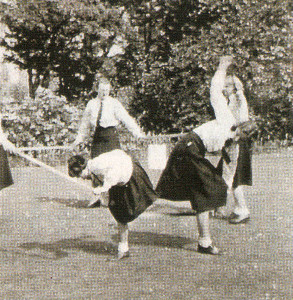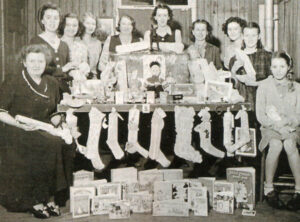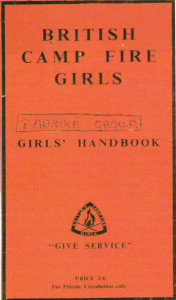
As a child I was very shy and found it hard to mix, so my mother encouraged me to join the Brownies. Unfortunately I wouldn’t settle, and it wasn’t until 1949, when I was 12 years old, that I joined the Camp Fire Girls, settling in along with some school friends very quickly.
Apart from those friends, with whom I remain in touch today, no-one seems able to recall the organisation, yet it was very popular for girls in their teens and was very similar to the Girl Guide movement.
Created in North America, Camp Fire Girls branched out into England during the 1940s and 50s.
We were always aware of its origins because apart from our uniform, which consisted of a cream blouse and brown hat and skirt, we also had a ceremonial North American Indian dress to which we added beads for our achievements, in much the same way that Girl Guides earned badges for activities such as swimming, cooking and other hobbies and interests.
I still have my badges and beads along with a handbook giving details of the honours to which we could aspire.
For housekeeping honours we had to “put away clothing, rugs, furs and blankets for the summer; carry in the fuel for the house every day for one month (I presume this meant coal!); and scrub a floor once a week for two months”.
For the exercise achievement we were expected to “walk 35 miles in the rain during any ten days taking precautions against colds; harness a horse to a cart and drive correctly” (this wouldn’t have seemed so bizarre during the 1940s and 50s when the milk, bread and coal were all delivered on the horse-drawn carts and vans which were a familiar sight); and “know and dance five standard folk dances” (no disco dancing then!).
Listed in ‘personal hygiene’ was the rather sadistic: “Take a cold bath or quick rub down every morning for ten weeks”, and we also had to “Sleep out of doors in two consecutive months between October and April”.
The list of honours we could achieve was endless, many reaching far beyond anything a girl guide would be expected to do today.
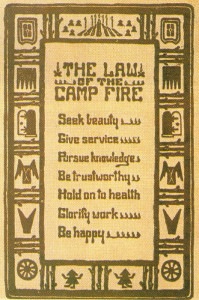
In true North American fashion we had unusual names, mine being ‘Wasita’. I still have a birthday card from one of our guardians signed “Impampa”. Our group was called Doanika, and we met weekly in an old tin chapel hut, said our prayers and played games. As Christmas approached we would make and decorate Christmas stockings, and gradually collect and make things to go in them. Once filled they were taken to a children’s home.
Something all Camp Fire Girls looked forward to was the camping holidays. Unfortunately my one and only experience reflects unhappy memories. I spent the first day in a large communal marquee, poorly and crying most of the time, extremely homesick. I was later moved to a smaller tent with two friends and hated it even more.
Being cramped and uncomfortable on the ground, with spiders running everywhere, I felt the outdoor life was not for me. I had a miserable sleepless night.
As we ventured out of our tents next morning the weather was beautiful and we sat out in the sun at long trellis tables having our breakfast. I can still remember the hordes of wasps around the marmalade pots.
A message had gone to my mother that I wanted to return home, but I couldn’t be fetched that day, so I had to fit in with the day’s activities, finishing with community singing around the camp fire.
Suddenly things didn’t seem so bad after all. Being worried at home and knowing how unhappy I was, my mother made arrangements for someone to come and collect me. By the time my transport arrived I’d settled in and was quite happy – and to their surprise found I didn’t want to go home.
In later years, whenever I heard Allan Sharman singing “Hello Mother, Hello Father here I am in Camp Granada – explaining how unhappy he was – then finishing with “Kindly disregard this letter.” I’m constantly reminded of that week.
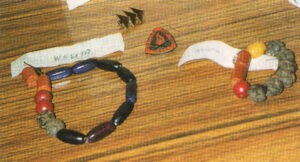
We walked for hours, covering many miles of countryside with a sense of panic eventually taking over. By some miracle and the help of an elderly farmer, we eventually arrived back at camp tired, hungry and with a wonderful feeling of relief.
Now, 50 years on, I have to say it was my one and only camping holiday. I am the secretary of a ladies’ group, and among my members are some of the girls who shared those experiences with me. We have great fun looking back and reliving those memories of being a Camp Fire Girl.
Irene Purslow
